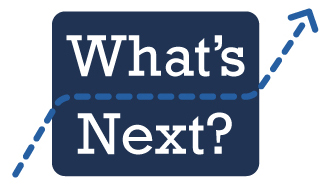
It’s okay to dip your toe in the pool, and then decide whether you’d like to dive in.
It’s okay to go on a first date — or 50 dates – before you decide whether you want to marry that person.
It’s okay to test-drive a car before you buy it.
In fact, not only is it “okay” to do all those things, it is recommended!
Because if we don’t test and try first, we may end up in a situation that, ultimately, does not work for us.
Sometimes there is no way of knowing that a path is all wrong, not until we fully experience it. And yet, many times, some testing and trying might have sent us some red flags that this was not the best path for us.
Testing and trying is the missing step in most international development job searches. I see this often in my work as a career coach to international development professionals.
When it comes to our careers, sometimes we just aren’t sure what we really want. We aren’t fully clear on what our strengths are, or what we need to be at our best at work, or what we will not tolerate in a job. And yet, we aren’t patient enough to wait (and struggle) for clarity to come to us. Or the not knowing is too uncomfortable. Or the end date of our job contract is nearing and we are nervous about paying the bills.
So we skim the job listings for openings in aid work, humanitarian assistance, development. We start applying for jobs. Some of them seem pretty interesting, and besides, what can you tell from a job description anyway?
And then we get the first interview, and then the second, and then we start hearing about the compensation package and the travel opportunities…it’s pretty exciting. It’s a confidence boost. And it’s better than not knowing. Better than waiting. So we go for it.
And later – whether it’s weeks or months or years later – we realize that this is not the right place for us.
Could we have saved ourselves some grief if we had tested and tried a bit first, before taking the plunge? I believe so. This is what I help my coaching clients do in the “What’s Next?” process. Once they become clear on what they bring to the table and what is important to them, testing and trying is the next step.
What does testing and trying look like?
The best approach is one that is tailored to your particular situation. However, generally speaking, it may involve something like:
- Having coffee with someone who works in the field/position/organization you are interested in. Asking them a bunch of questions about what they like and dislike about their work, what a typical day is like, what the main challenges are, what the office politics are like, etc. (And if the person you want to meet with is far away from where you are, do it over Skype. Don’t let distance get in the way.)
- Doing other forms of research — Googling counts — to learn as much as you can about your target topic(s).
- Taking on a side project in your current job that will expose you to the new subject matter/role you are contemplating (even if that would be outside your current organization).
- Doing a short-term internship or temporary assignment (TDY) in your proposed new field, organization, or location.
- If you can’t quit your current job to do an internship (and I understand that most mid-career professionals would not be willing to do so), and if a TDY is not practical, consider doing volunteer or pro bono work in your area(s) of interest — after work hours, on the weekends, and/or even on your vacation.
- If you’re considering striking out on your own as a consultant or other self-employed professional, starting up a “side hustle” first, before quitting your job. See if there is a demand for your services, get a few clients in your “spare time,” experience what it’s actually like to do the work as a freelancer.
Basically, it’s dipping your toe in the water, going on a first date with a prospective new job, taking a “test drive” with a new employer.
Reflection required
Reflection is the key ingredient to mix in with any of these forms of testing and trying. Take a step back from the learning and experiencing to ask yourself:
- What is my gut reaction? Am I more excited, interested, and intrigued as a result of testing and trying? Or am I feeling ambivalent, anxious, or dubious?
- How might this play to my strengths?
- How would this type of work fit my personality and temperament, and how might it be a poor fit?
- How would this align with my core values?
- How might this fit with my personal and professional priorities at this stage in my life?

And then keep testing and trying until you are sure this is the “pool” for you. And I will be the first to cheer when you dive in.
P.S. If you’re contemplating a career transition, but feeling stuck, there are two spots left in my upcoming “What’s Next?” online group coaching program. Registration is open until Wednesday, September 12 at 8 pm Eastern time. Click here for more information.








